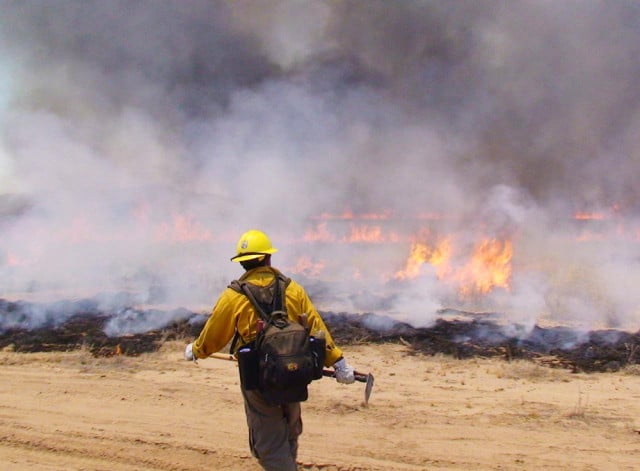MATT HIRJI
CUP Prairies & Northern Bureau Chief

A new partnership out of the University of Alberta is working to reduce the impact of the massive wildfires that often rip through Northern Saskatchewan, Alberta and B.C. during the summer.
EDMONTON (CUP) — The increased prevalence of wildfires over the past decade is becoming a concern for many Canadians.
But a recently announced partnership between the University of Alberta and several provincial and national groups has ignited hope that something can be done to reduce instances of ferocious and costly fires that pose a danger to communities across the country.
The Western Partnership for Wildland Fire Science was officially announced late last month as a formal agreement between Natural Resources Canada, Alberta Environment and Sustainable Resource Development, and the University of Alberta. The agreement will allow for the groups to share resources while also collaborating on research initiatives.
For Mike Flannigan, a University of Alberta professor and Director of the WPWFS, the solidification of the partnership couldn’t have come at a more appropriate time.
“Area burned [in Canada] has doubled since the 1970s,” Flannigan said. “I attribute that to human caused climate change. Our climate is getting warmer and a warmer climate generally leads to more fires. The bottom line is that our forest fuels are drier, which means it’s easier for fires to start and spread.”
“In a warmer world we are going to see more intense fires that are harder to put out. These changes will continue and that means that traditional methods of fire management may not work in the future.”
On average, more than 8,000 fires destroy two million hectares of forest every year in Canada. The costs of containing and extinguishing those fires alone costs fire agencies nearly $800 million. Flannigan explained that those numbers have skyrocketed in recent years — in 2011, a single wildfire near Slave Lake cost $700 million.
Despite the rising economic costs and inherent dangers of wildfires, there are very few researchers in Canada who are focused on learning about how to contain and fight ferocious fires.
“We want to make [the WPWFS] a centre for addressing fire problems both from a science perspective and to help with the day-to-day operations of fire fighting,” Flannigan said. “Our fire management agencies are amongst the best in the world across Canada but that doesn’t mean that they can’t improve. We are looking to see if they can be even more efficient, build better tools and fight fires more effectively.”
There are several initiatives that the newly-founded partnership will focus on. Education, communication and outreach will come together to form a cohesive strategy to mitigate the effects of ferocious wildfires.
Research, will be central to the partnership. Flannigan said that the organization has 20 research projects underway that focus on everything from lightning strikes to fire behaviour and will be given additional funding.
“Most of the money is going to graduate students, which I consider to be an excellent investment. They are tackling issues and we are training people at the same time. It’s kind of a win-win situation. There could be breakthroughs that happen quickly, or it could just be another piece of the puzzle that could lead to breakthroughs in the future.”
—
Photo: Calc Tufa/Flickr